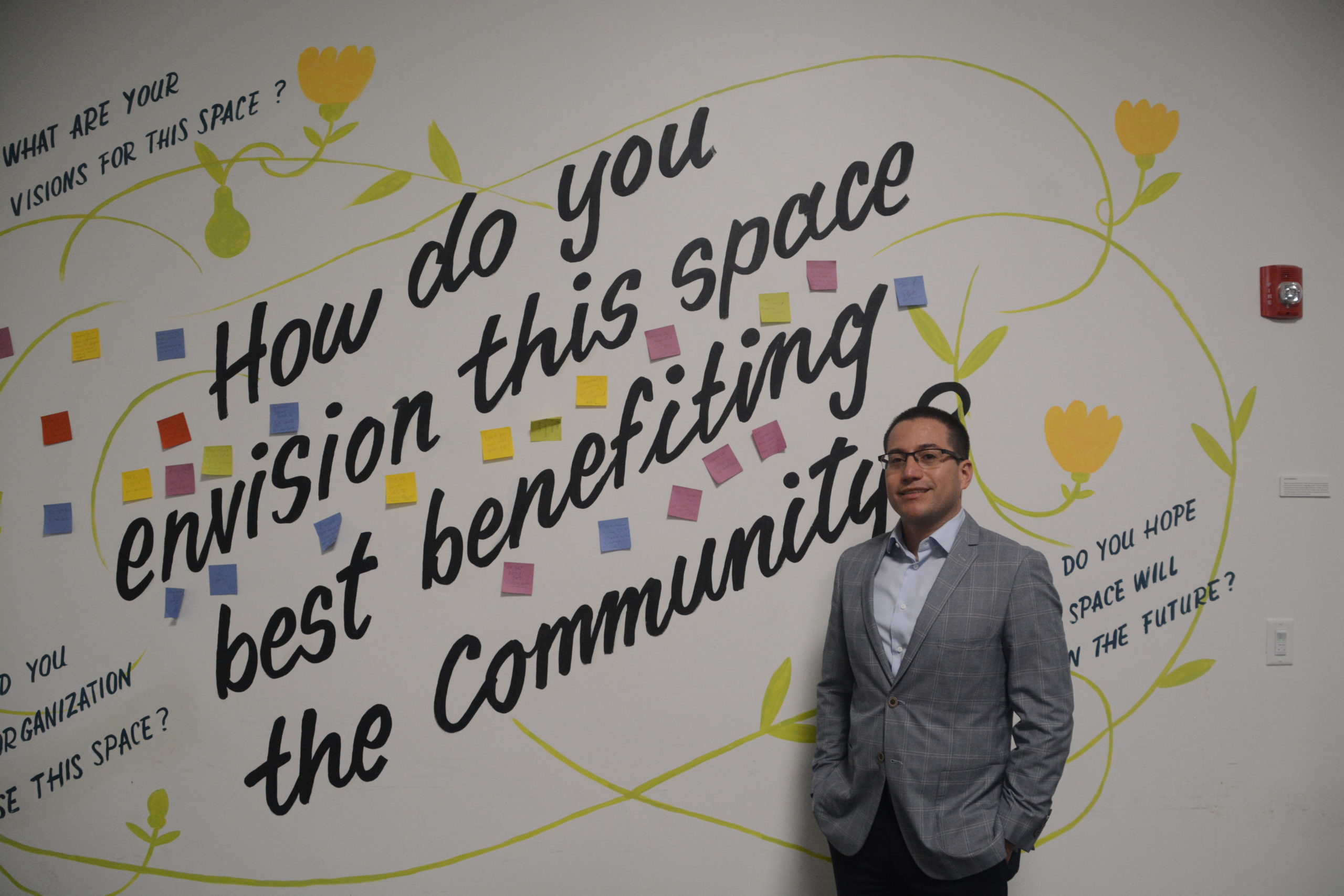In the heart of downtown Oakland stands a seven-story, 23,000-square foot former bank that is now home to six nonprofit organizations, including the building’s owner, The Greenlining Institute. Greenlining advocates for racial and economic justice through policy, research, organizing, and leadership initiatives. The name is a rejoinder to “redlining,” the now-illegal practice of denying services and investments to communities of color.
Orson Aguilar, President of The Greenlining Institute, was born and raised in Boyle Heights, Los Angeles. He first heard about Greenlining while earning his Masters in Public Affairs at the University of Texas, Austin. The model intrigued him, and he interned there in the summer of 1997 before joining full-time after graduation. Twelve years later, he was appointed the organization’s President. “Greenlining is a unique animal,” he says. “It’s hard to find a think tank advocacy group that’s run and mostly staffed by people of color.”
Since its founding in 1993, Greenlining had been headquartered in Berkeley, California. But Orson saw greater need for Greenlining’s work in Oakland, and he thought the city’s diversity and history of activism made it a better-suited location. He also felt they could uniquely contribute to the community by purchasing their own building and bringing in nonprofit tenants at below-market rates, helping to preserve affordable office space for vital nonprofits in quickly-gentrifying Oakland.
Orson shared the idea with Greenlining’s trustees, who were supportive. When one of them heard about an 85-year-old bank building that was on the market in Oakland, he alerted Orson. After seeing the space’s central location and relatively reasonable $1.9 million price tag, Orson immediately asked the board for permission to buy the building. Initially, the trustees worried that the hefty investment might cut too deeply into the organization’s program budget, but everyone agreed that the purchase would help both Greenlining and other nonprofits in the long run. They moved forward.
Greenlining had managed to build up a healthy financial reserve over the years, so they were able to purchase the entire building in cash. However, it needed a lot of work to bring it up to code. Luckily, the new building qualified for the federal new markets tax credit program, a program that incentivizes community development and economic growth in distressed communities. Greenlining was awarded a loan through the program, which helped to cover the costs of restoration. Even so, there was a funding gap.
That’s where the Program Related Investment (PRI) loan from the San Francisco Foundation came in. The PRI loan allowed Greenlining to close their financing gap and complete the multimillion-dollar renovation of the dilapidated building. Without the loan, Greenlining would have had to obtain financing from a conventional bank, which would have meant greater interest rates and carrying costs and forced them to charge their nonprofit tenants higher rents.
After three years of construction, Greenlining opened the doors of their brand-new building in January of 2017. They and their tenants have been thrilled with the space ever since. Orson says it’s vital that funders put more money towards displacement prevention initiatives like his. “Our nonprofits are the frontline against displacement and gentrification,” he says. “They’re the voice for our communities, they’re our organizers. If they’re not strongly rooted in Oakland, it’s going to be really hard to keep other people here.”

